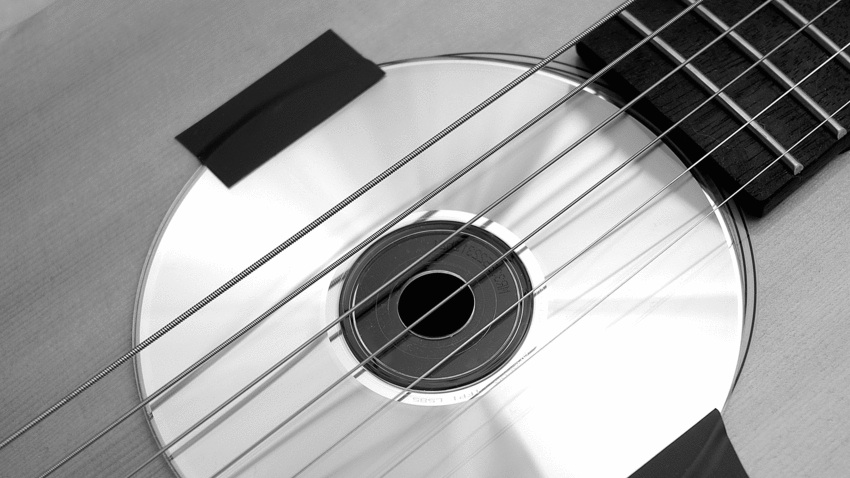Quick tips for acoustic guitar maintenance
Keep your acoustic in top shape and deal with pesky problems

In the past, we have received lots of emails with acoustic guitar related queries so we thought it would be handy to compile a quick-fire list of the most popular ones. From how to clean your acoustic guitar to lowering the action, here you will find some simple to understand answers to ease your acoustic woes.
Adjusting the neck
Eyeball your neck from the headstock end. If the neck is dipped or over bent, locate your trussrod bolt (most commonly located on the inside of the sound hole just below the neck) and use an Allen key to adjust. If the neck is dipped (lower in the middle than either end) turn the key clockwise. If it's over-bent (high in the middle than either end) turn anti-clockwise. Never force the trussrod if it's tight.
Lowering the action
After ensuring that the neck is correctly adjusted, loosen the strings to allow you access to the bridge saddle. Most acoustics have a thin plastic saddle that slot's in to the bridge. With the strings loosened, the saddle should be easily removed. If not, CAREFULLY use pliers to pull it out. Check the saddle for shims (little pieces of wood or plastic) and re-insert it. Tune up and check the action. If it's lower and feels good, job done! If not, carefully sand away (small amounts at a time) until the action is perfect for you (you will be surprised at how little you need to remove to dramatically affect the action). Too far and your guitar will buzz and rattle.
"Whenever you change gauge, have a pro re-string it as heavier gauges can cause the neck to bend."
Acclimatise your guitar
Extreme temperatures from both ends of the spectrum can have horrendous effects on your guitar. Whenever you go from freezing weather (travelling to/from a gig with your guitar on the back seat) and then immediately taking it from it's case in your warm house and leaving it on the stand can damage your guitar. Instead, leave your guitar in it's case for at least an hour so that it can acclimatise to its warmer environment. You can prevent serious warping this way. Also, NEVER leave your guitar next to a heat source, ie, a radiator or a fireplace he extreme heat will also cause it to warp.
Get the MusicRadar Newsletter
Want all the hottest music and gear news, reviews, deals, features and more, direct to your inbox? Sign up here.
Finding the right gauge of strings
The main thing is to experiment. I recommend that beginners start with a light set of strings and work their way up until they find what is comfortable (keep in mind that the higher the gauge, the harder it is to play, but you will get better tone and volume). Top tip: whenever you change gauge, have a pro re-string it as heavier gauges can cause the neck to bend.

Want a cheap way to bust feedback? Read on!
Fingerboard cleaning tips
Keeping your gear clean is as important as practising. Look after your gear and it will look after you. Having a dirty fingerboard will reduce the life of your strings so keep it clean and you can save some cash. To do so, remove the strings and use a duster to remove all surface dust from the neck. Apply a coat of polish and buff off making sure you get in under the frets. (Use a ruler or card lightly to avoid scratching the fingerboard). Apply lemon oil; leave it for a while to do its magic and then wipe off with a clean cloth. If it has a lacquer finish, apply guitar polish, if not then leave it as it is.
Choosing the right pick-up for your acoustic
If you want to use effects or play through an amp, you need an acoustic guitar with a pick-up. If you don't have one of these, you can purchase one...
Stick on bug - inexpensive to buy (£10-£50) and good tone if placed correctly. The downside being that all handling noise will be amplified.
Sound hole pick-up - easy to fit and inexpensive. Unfortunately, it's more of a glorified electric guitar pick-up and therefore only picks up the strings and not the body of the guitar.
The undersaddle piezo - decent tone and good feedback resistance, although the tone can sometimes be a bit scratchy and is expensive to have fitted.
Built in microphone - the best natural tonal quality but can be prone to feedback and handling noise.
"Never leave your guitar next to a heat source, ie, a radiator or a fireplace he extreme heat will also cause it to warp."
Reclaim your lost picks
Does your acoustic keep eating your picks when you least expect it? Never fear because all you need is a pencil with a blob of blu-tack on the end and you'll be able to easily retrieve your precious plectrum. Just poke it between the strings and into the sound hole. The picks will stick to it. An easy solution that saves you shaking your guitar around your head and yelling like the Incredible Hulk.
Electro-acoustic feedback buster
Take a rubbish compact disc, and place it over the sound hole of your electro-acoustic guitar. Make sure the label is face down. Fix the CD in place with sticky tape and then laugh at the suckers who bought a £10 feedback buster.
“Beyond its beauty, the cocobolo contributes to the guitar’s overall projection and sustain”: Cort’s stunning new Gold Series acoustic is a love letter to an exotic tone wood
“Your full-scale companion. Anytime. Anywhere… the perfect companion to your full-size Martin”: Meet the Junior Series, the new small-bodied, travel-friendly acoustic range from Martin









